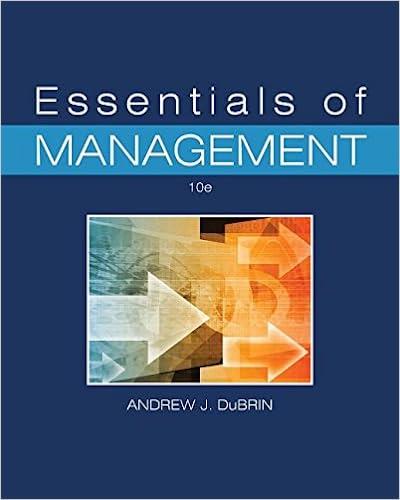Question
Problem Comfort Plus Inc. (CPI) manufactures a standard dining chair used in restaurants. The demand forecasts for quarter 1 (January-March) and quarter 2 (April-June) are
Problem
Comfort Plus Inc. (CPI) manufactures a standard dining chair used in restaurants. The demand forecasts for quarter 1 (January-March) and quarter 2 (April-June) are 3700 chairs and 4200 chairs, respectively. CPI has a policy of satisfying all demand in the quarter in which it occurs.
The chair contains an upholstered seat that can be produced by CPI or purchased from DAP, a subcontractor. DAP currently charges $12.50 per seat, but has announced a new price of $ 13.75 effective April 1. CPI can produce the seat at a cost of $10.25. CPI can produce up to 3800 seats per quarter.
Seats that are produced or purchased in quarter 1 and used to satisfy demand in quarter 2 cost CPI $1.50 each to hold in inventory, but maximum inventory cannot exceed 300 seats.
The problem was formulated as follows:
x1 = number of seats produced by CPI in quarter 1,
x2 = number of seats purchased from DAP in quarter 1,
x3 = number of seats carried in inventory from quarters 1 to 2,
x4 = number of seats produced by CPI in quarter 2, and
x5 = number of seats purchased from DAP in quarter 2.

This problem was solved by The Management Scientist giving the following output:

MiN 10.25x1+12.5x2+1.5x3+10.25x4+13.75x5 (costs) s.t. x1+x2x33700(quarter1demand)x3+x4+x54200(quarter2demand)x13800(CPIsproductioncapacityinquarter1)x43800(CPIsproductioncapacityinquarter2)x3300(inventorycapacity)x1,x2x3,x4,x50 OBJECTIVE COEFFICIENT RANGES RIGHTHAND SIDE RANGESa) What is the optimal solution including the optimal value of the objective function?
b) If the per-unit inventory cost increased from $1.50 to $2.50, would the optimal solution change? Would the optimal value of the objective function change?
c) If in quarter 2 CPIs per-seat production cost increased by $1.25 and DAP changed its mind about the announced price increase (thus leaving it at $12.50 per seat), would the optimal solution change?
d) If DAP reduced its per-seat selling price in quarter 1 from $12.50 to $12.25, should CP| purchase any seats in quarter 1?
e) How much is it worth to CPI to increase its inventory capacity from 300 seats to 400?
f) If CPI increased its production capacity by 100 seats in both quarters 1 and 2, what would be the savings for CPI (ignoring the capacity-expansion expense)?
Step by Step Solution
There are 3 Steps involved in it
Step: 1

Get Instant Access to Expert-Tailored Solutions
See step-by-step solutions with expert insights and AI powered tools for academic success
Step: 2

Step: 3

Ace Your Homework with AI
Get the answers you need in no time with our AI-driven, step-by-step assistance
Get Started


